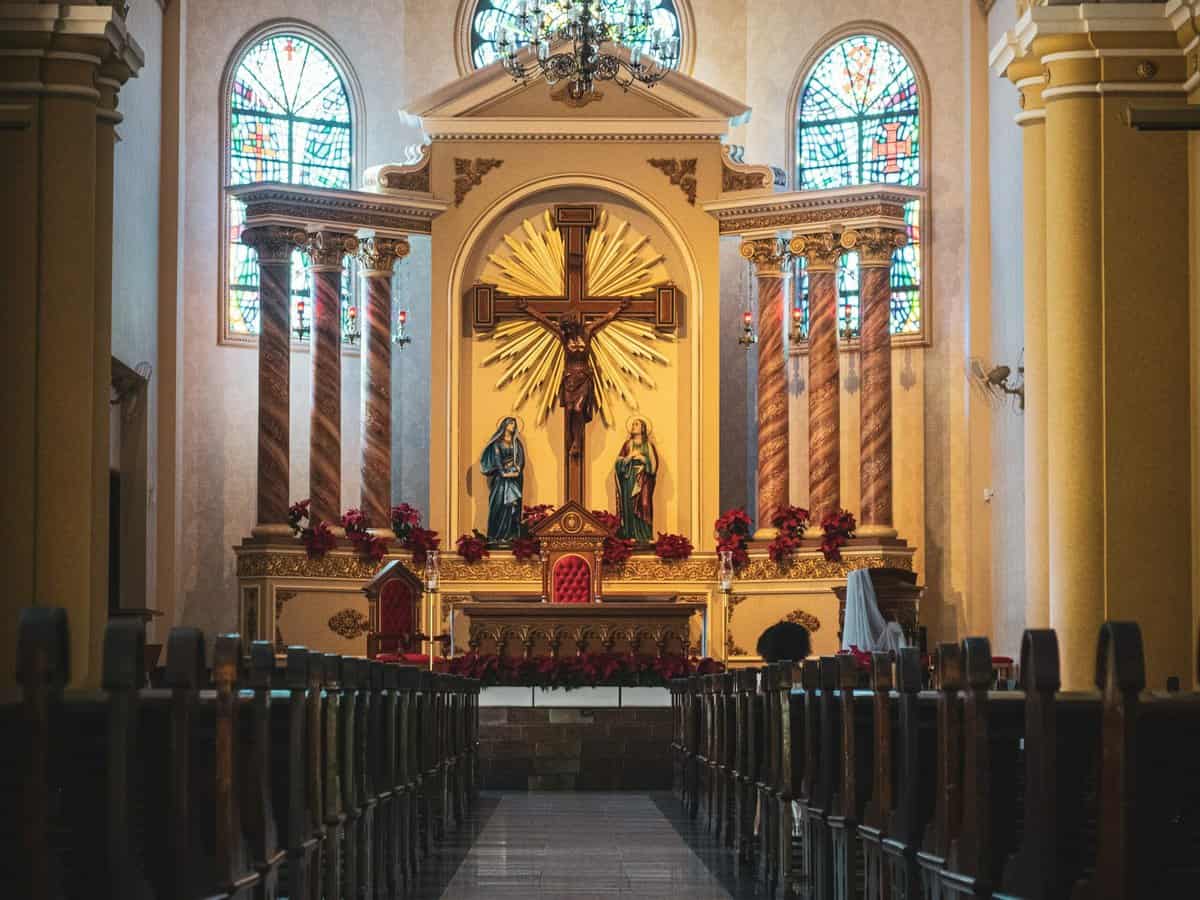New here? Join us in prayer! Click here to get novena reminders by email!

Feast Days play an important role in the life of the Church. But where did they come from? And why are they necessary?
History of the the Liturgical Calendar
Like many traditions of the early Church, as many early Christians were converts from Judaism, the concept of a Liturgical calendar has Jewish roots.
Similar to the Jewish Calendar, the Christian calendar consists of weeks made up of seven days—six for work and the seventh for rest and worship. The early Church however developed their calendar around the Resurrection so the Lord’s Day was changed from Saturday to Sunday to honor this central tenet of our faith.
The Christian Calendar is also made up of seasons that begins with the Incarnation in the season of Advent and ends with the Feast of Christ the King, tracing Salvation History from start to finish each year.
Over the centuries, the Church has added feast days and holy days to this sacred calendar. Pope Pius V first set the official feast days celebrated by the Church by promulgating the universal calendar in 1568. The General Roman Calendar was later revised by Pope Pius XII and again by Pope St. John XXIII.
These days celebrate important events in the life of Christ and the holy men and women who have gone before us.
Feast days often corresponded to the date of a saint’s death, or their birth into eternal life–a practice that probably formed thanks to the early Christians who celebrated the anniversary of a martyr’s death with a liturgical celebration at the burial site.
Three Types of Festivals
While special Christian festivals are often grouped together under the title of “feast day,” the Church actually distinguishes three types of holy days: Solemnity, Feast, and Memorial.
Solemnities
A solemnity holds the highest rank among the holy days. The Church observes 24 solemnities, each one calling us to reflect on the most significant mysteries of our faith.
Solemnities in the Church include the most important days in the life of Jesus and His Church such as Christmas, Easter, and Pentecost. Solemnities also include days that commemorate the principal titles of Our Lord such as Christ the King and the Sacred Heart, and of the Blessed Mother, specifically Mother of God and the Immaculate Conception.
The Church remembers several saints like St. Joseph, St. John the Baptist, and Sts. Peter and Paul, for their important roles in salvation history by setting aside a solemnity in their honor.
Feasts
Feast Days are the next highest rank of holy days. A feast honors saints and other events in the life of Christ.
Notable feast days include the Annunciation, the Visitation, the Presentation and the Ascension. The Apostles, the Evangelists, St. Mary Magdalene, and the Archangels also have their own feasts.
Memorials
The third category of celebrations is most likely what comes to mind when Catholics talk about “feast days.” Memorials honor the virtuous life of a saint and are either considered obligatory or optional.
This distinction really only applies to the priest and whether or not they get to choose to celebrate the memorial liturgically with special Mass parts. Obligatory memorials focus on saints of “universal significance” in the Church like St. Therese of Lisieux, St. Anthony, and St. Francis Xavier.
Optional memorials also often identify a saint with a special significance to a certain place or religious order. For example, priests in the United States have the option to celebrate the feasts of saints like Katherine Drexel and St. Junipero Serra.
Bringing us into the Story
The Liturgical Calendar isn’t simply a cute but a necessary part of our Catholic tradition; rather, it is a deeply significant aspect that draws us deeper into the beauty of our faith.
The Liturgical Calendar of the Catholic Church shapes our human experience of time in a way that intertwines the Sacred. It creates a rhythm for our lives with God at its heart and gives meaning to our earthly experience.
It gives us days of fasting and feasting, days to mourn and days to celebrate in order that we might encounter the Paschal Mystery, not as observers, but as active participants.
Solemnities, Feasts, and Memorials help us focus our gaze on our eternal destination and recognize our own role in the history of Salvation.
Celebrating feast days and living in accord with the liturgical year helps us see the saints as still active members of the Body of Christ; brothers and sisters who can pray for us and serve as examples of virtue and love, that we might follow in their footsteps.
Dear Mama Mary,
I am coming to you with humility to say thank you. I gave you a condition-you being so loving you accepted it-that I wanted a job offer before the year ended. Before the novena I had never been called for an interview. Out of the many you have given me an offer that I have taken. Mama I thank you for taking my stress, for loving me, for hearing my prayer. I know this job is not the best and I am still continuing to ask you to bless me with my dream job. You have taken me through all the phases of the interview, so I am now praying and waiting.
Thank you Mama.
Dear Jesus, Mary and St. Therese, please heal our son of his anxiety. Thank you God 🙏.
Clarification; Our church calendar begins with the 1st Sunday of Advent, in preparation of the Solemnity of the birth of our Lord Jesus, (Christmas). The Solemnity of the Incarnation, aka Annunciation is celebrated March 25th
Correct?
Dear Jesus, Mary and St. Therese of Lisieux, please heal and protect my family, friends and I.
Please help me to love my family and friends, especially when they irritate me the most.
Thank you God.🙏